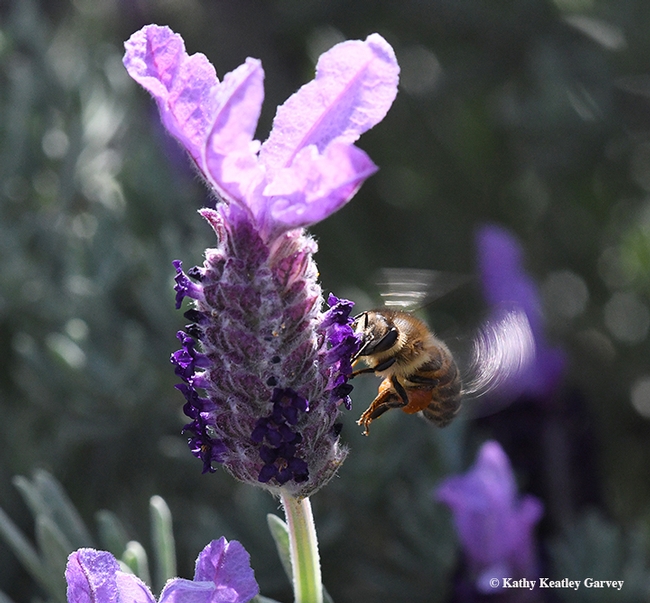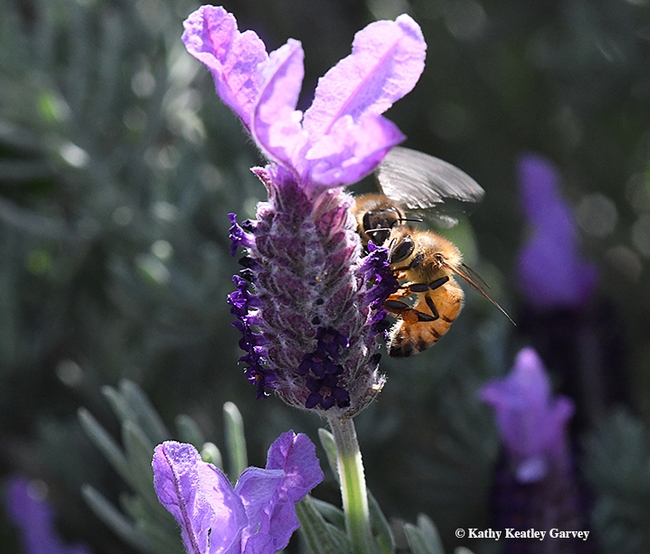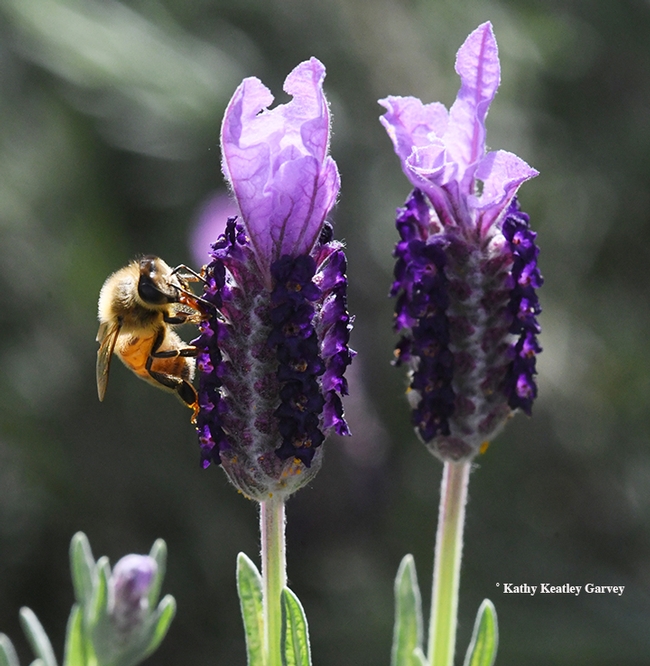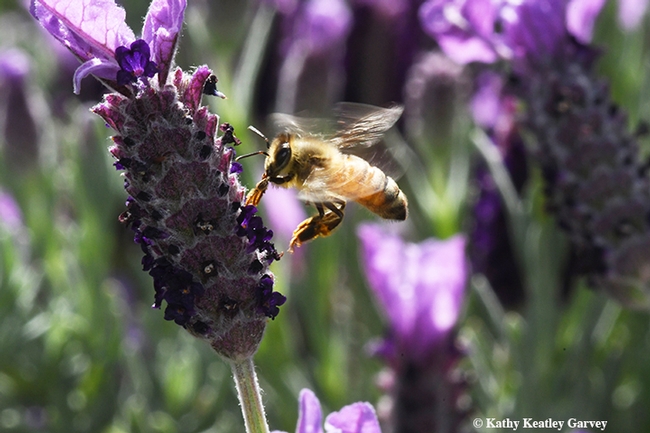If you like writing with light (photography), then you'll probably love capturing images of honey bees spinning like helicopters.
In the late afternoon, when the light softens, head over to your favorite Spanish lavender patch. Pull up a chair, listen to the buzz of the bees, and watch them spin their wings somewhat like helicopters do their blades.
Such was the case yesterday. The bees were buzzing so loud in the patch of lavender, Lavandula stoechas, that they sounded like spring unleashed. That buzz you hear is their wings; they've been recorded at 200 beats per second. Honey bees can be long-distance travelers; they can forage up to five or six miles, and can move about 15 miles per hour.
Those streaming purple petals topping the bloom are actually sterile bracts--Wikipedia defines a bract as "a modified or specialized leaf, especially one associated with a reproductive structure such as a flower, inflorescence axis, or cone scale." The bracts resemble rabbit ears, but ironically, Spanish lavender is rabbit-resistant and deer resistant (which is probably why there are no deer or rabbits in our urban yard!)
Meanwhile, if you've been wanting to learn more about honey bees, mark your calendar for these events in Davis and Woodland, Yolo County.
California Honey Festival: The inaugural California Honey Festival will take place Saturday, May 6 in downtown Woodland. Associated with the UC Davis Honey and Pollination Center, it will be held outdoors (Main Street), encompassing four blocks. It's free and open to the public. Expect beekeeper talks, booths, vendors, music, mead, honey tasting and lots of fun, says Amina Harris, director of the Honey and Pollinator Center See http://californiahoneyfestival.com.
UC Davis Bee Symposium: The Honey and Pollination Center and the UC Davis Department of Entomology and Nematology are sponsoring their third annual Bee Symposium, "Keeping Bees Healthy," on Sunday, May 7 in the UC Davis Conference Center. Keynote speaker is noted apiculturist Steve Sheppard of Thurber Professor of Apiculture and chair of the Department of Entomology, Washington State University, Pullman, Wash. Sheppard specializes in population genetics and evolution of honey bees, insect introductions and mechanisms of genetic differentiation. He also heads the Apis Molecular Systematics Laboratory. Registration is underway at http://honey.ucdavis.edu/events/2017-bee-symposium.
Western Apicultural Society (WAS): Founded 40 year ago at UC Davis, WAS will return to its roots for its next conference, set from Sept. 5-8 in Davis. Its president is Eric Mussen, UC Extension apiculturist emeritus, who is based in the UC Davis Department of Entomology and Nematology. He's a familiar face; he's one of the three WAS co-founders and he's serving his sixth term as president. The conference open to the public. Registration is underway on the WAS website, http://www.westernapiculturalsociety.org.
Attached Images:

A honey bee nectaring on Spanish lavender. This was taken with a Nikon D500 and a 200mm macro lens. Settings: ISO 3200, f-stop 13, and shutter speed of 1/640 of a second. No flash. (Photo by Kathy Keatley Garvey)

Spinning wings: Honey bees nectaring on Spanish lavender. This photo was taken with a Nikon D500, 200mm macro lens. Settings: ISO 3200; f-stop, 13; and shutter speed of 1/640 of a second. (Photo by Kathy Keatley Garvey)

Check out the red tongue (proboscis) as the honey bee sips nectar from a Spanish lavender. (Photo by Kathy Keatley Garvey)

Honey bee cleaning her tongue, just before heading for more nectar from the Spanish lavender. (Photo by Kathy Keatley Garvey)